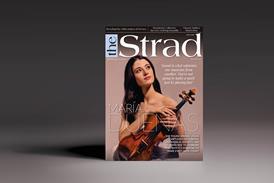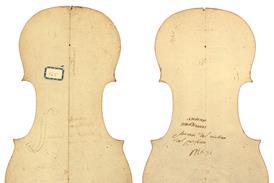- News
- For Subscribers
- Student Hub
- Playing Hub
- Podcast
- Lutherie
- Magazine
- Magazine archive
- Whether you're a player, maker, teacher or enthusiast, you'll find ideas and inspiration from leading artists, teachers and luthiers in our archive which features every issue published since January 2010 - available exclusively to subscribers. View the archive.
- Jobs
- Shop
- Directory
- Contact us
- Subscribe
- Competitions
- Reviews
- Debate
- Artists
- Accessories
Bach Cello Suites: What do we really know about Bach’s Cello Suites?

Bach’s sublime Six Suites for solo cello are possibly the most frequently published works in western music history, yet their source editions are shrouded in mystery. Cellist and writer Jeffrey Solow puts forward an intriguing new theory as to their origins
When I was a young cellist I learnt the traditional story of Bach’s Cello Suites BWV1007–12 – one offered in programme notes, liner notes and introductions and commentaries to published editions, and taught to most students. We were told that Bach wrote them c.1720 in Anhalt-Cöthen for the court cellist Christian Bernhard Linike (1673–1751) or perhaps for Christian Ferdinand Abel (1682–1761), court gamba player (and maybe cellist). Anna Magdalena Bach’s manuscript had been copied from her husband’s lost fair copy, and the copy made by the organist, composer, and disseminator of Bach’s works Johann Peter Kellner (1705–72) was presumed to have been copied from Bach’s lost working manuscript. Two anonymous later 18th-century copies generated controversy: were they, as Anner Bylsma called them on occasion, the ‘earliest editions’ of the suites, or did they reflect a revised version made by Bach himself, as several musicologists suggested? The Sixth Suite was written for the viola pomposa, a now obsolete, five-string, horizontally played instrument invented by Bach, and the scordatura tuning of Bach’s Fifth Suite – the A string being lowered to G – imitated the tuning of its earlier original version for the lute.
In truth, none of these ‘facts’ can be proved, and at most, only a couple of them are likely to be correct. And it is not easy to keep current vis-à-vis the latest theories to their origins. Anything committed to print may become obsolete if new information comes to light or as new and persuasive theories are advanced – sometimes during the short interval between being written and being published!…
Already subscribed? Please sign in
Subscribe to continue reading…
We’re delighted that you are enjoying our website. For a limited period, you can try an online subscription to The Strad completely free of charge.
* Issues and supplements are available as both print and digital editions. Online subscribers will only receive access to the digital versions.






















